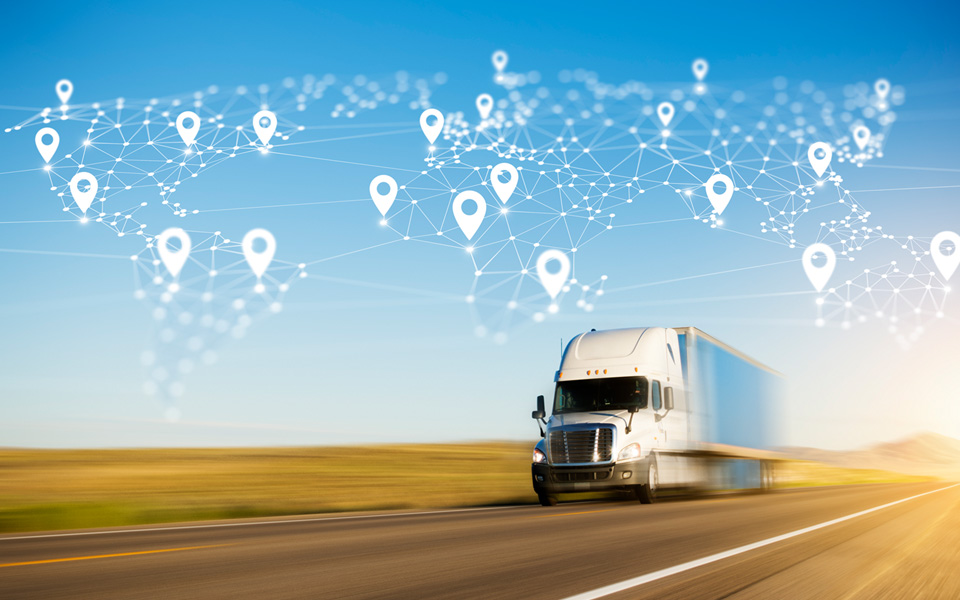Prepare for the future of real-time cargo tracking

*On June 1, 2023 Emerson’s Climate Technologies business became a new standalone company – Copeland. Though our name has changed, we are building on more than a century of HVACR innovation and industry leadership, and Copeland continues to offer the same products, industry stewardship, and learning opportunities you’ve grown to trust. Information found on this webpage posted before June 1, 2023 may contain our old name or branding, but you can be at ease knowing it was created with the knowledge and expertise of Copeland.
The real-time cargo tracking industry is changing. For years, 2G and 3G cellular networks have enabled real-time trackers to deliver live location and temperature data on shipments traveling throughout the global perishable cold chain. But in many parts of the world, the mobile device industry is outgrowing the use of 2G and 3G; many of these legacy networks are turning down to make room for newer 4G and 5G options. As this transition takes place over the next several years all around the globe, end-users of real-time cargo tracking devices may experience gaps in their live shipment monitoring and tracking capabilities.

What the 2G turndown means to perishable cold chain stakeholders
In recent years, real-time trackers have become essential tools for helping to monitor food quality and safety in the perishable supply chain. For many cold chain leaders, Emerson’s GO real-time trackers are viewed as essential, cost-effective devices for protecting their valuable shipments. Combined with a cloud-enabled technology infrastructure and supporting Oversight software, this solution grants growers, logistics companies and food retailers live access to in-transit shipment location and sensor data they need to help monitor food quality and safety — such as levels of temperature, humidity, light exposure and much more.
But as 2G and 3G networks become obsolete, end-users of these real-time tracking devices may experience data gaps in their in-transit shipment coverage, which could result in:
-
- Inability to help monitor food quality (freshness) and safety in real-time
- Missing real-time alerts (emails/text messages) of temperature excursions
- Incomplete data for prompt resolution of shipment disputes
- Potential risks to brand reputations
If your company is currently using 2G and 3G real-time trackers, you already may have experienced the impacts of cellular network turndown. However, if you’re not closely monitoring in-transit shipment data, you may not even be aware of gaps in your real-time data. Moving forward, it’s important to be vigilant of any disruptions in coverage. Look for the following signs of network connectivity issues:
-
- Increasing blind spots in visibility to shipment location/temperature data
- Intermittent brownouts of real-time access
- Gaps in historic trip coverage and data points
What is Emerson doing to help you navigate the cellular transition?
The cellular network transition has created a complex landscape that will be in flux for the next several years. As cold chain experts and cargo industry stewards, Emerson is doing everything possible to help prepare the cargo tracking industry for this ongoing transition. We’re addressing this challenge on multiple fronts by:
-
- Working closely with our customers to determine which real-time trackers work best for their shipping routes
- Communicating with cellular companies to get a better understanding of the specific timing of 2G and 3G network turndowns
- Developing the next generation of real-time trackers that utilize emerging low-power, wide-area (LPWA) 4G and 5G network technologies
Wherever your business ships its perishable cargo, Emerson is committed to helping you navigate this cellular transition. Our subsequent blog will discuss the timing of the 2G network turndown, emerging cellular technologies, and the next generation of devices designed to bridge the gap between 2G and 4G/5G networks. Read our informative white paper to learn how we’re helping the industry achieve uninterrupted real-time cargo tracking of perishable shipments.
Protection for high-value shipments just got even better
by Alex Axelsson | Cold Chain, Transportation
We’re excited to announce the release of Copeland’s newest real-time tracker, the GO Real-Time...

Three proven strategies to prevent cargo theft
by Chris Lafferty | Cold Chain, Transportation
The over-the-road (OTR) transport industry is experiencing a surge in cargo thefts. As thieves...

Four Keys to Successful Cold Chain Shipping
by Michelle Rodriguez | Cold Chain
Temperature management best practices for maximizing perishable food quality and safety When...
The post Prepare for the Future of Real-Time Cargo Tracking appeared first on Copeland.